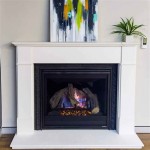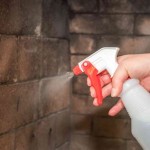Replacing a Gas Fireplace with a Wood Burning Insert: A Comprehensive Guide
Many homeowners considering a fireplace upgrade find themselves weighing the benefits of replacing a gas fireplace with a wood burning insert. This decision involves a significant investment and careful consideration of various factors. This article provides an overview of the process, outlining the key advantages, disadvantages, and considerations involved in this type of fireplace conversion.
The primary reason individuals consider this transition is often related to aesthetics and the authentic experience of a wood-burning fire. While gas fireplaces offer convenience and ease of use, they lack the crackling sounds, natural aroma, and visual appeal associated with burning wood. Furthermore, in situations where grid power is unavailable, a wood-burning insert can provide a reliable source of heat, adding a layer of energy independence. Economic factors, such as the potential cost savings of burning readily available or locally sourced wood compared to fluctuating gas prices, also play a role in the decision-making process.
However, replacing a gas fireplace with a wood-burning insert is not a simple swap. It requires meticulous planning, adherence to building codes, and often professional installation. Understanding the complexities involved is paramount to ensuring a safe, efficient, and satisfying outcome.
Understanding Building Codes and Regulations
Prior to initiating any work, thoroughly research and understand local building codes and regulations pertaining to wood-burning appliances. These codes are in place to safeguard against fire hazards, ensure proper ventilation, and minimize environmental impact. Contacting the local building department is essential. They can provide detailed information on permit requirements, allowable insert types, chimney specifications, and necessary clearances from combustible materials.
Many jurisdictions have regulations concerning emissions from wood-burning appliances. The Environmental Protection Agency (EPA) has established standards for wood-burning stoves and inserts to reduce particulate matter emissions. Ensure that the selected wood-burning insert meets EPA certification requirements to comply with local regulations and minimize environmental impact. Some areas may even offer incentives or rebates for installing EPA-certified appliances.
Furthermore, building codes may dictate the type of chimney liner required for a wood-burning insert. Gas fireplaces typically vent through a different type of chimney than is acceptable for wood-burning appliances. A stainless-steel liner specifically designed for wood-burning applications is often necessary to ensure proper draft and prevent the buildup of creosote, a highly flammable byproduct of wood combustion.
Failure to comply with building codes can result in fines, mandatory removal of the insert, and potential safety hazards. Obtaining the necessary permits and inspections is crucial for ensuring the legality and safety of the installation.
Choosing the Right Wood Burning Insert
Selecting the appropriate wood-burning insert is a critical step. Several factors must be considered to ensure the insert effectively heats the intended space and fits within the existing fireplace opening. One of the most important considerations is the heating capacity of the insert, typically measured in British Thermal Units (BTUs). Calculate the square footage of the area you intend to heat and choose an insert with a BTU rating that aligns with those heating needs.
The size and dimensions of the fireplace opening are equally important. Accurately measure the height, width, and depth of the existing fireplace to ensure the chosen insert will fit properly. Some inserts may require modifications to the fireplace opening, which can add to the overall cost and complexity of the installation. Pay close attention to the firebox size of the insert. A larger firebox allows for longer burn times and the ability to accommodate larger logs.
Efficiency is another key consideration. Look for inserts with high efficiency ratings, indicating that a greater percentage of the wood's energy is converted into usable heat. EPA-certified inserts are generally more efficient and produce fewer emissions than non-certified models. Also, consider the features of the insert, such as a blower fan to circulate heat, a thermostat for temperature control, and a self-cleaning glass door.
Construction quality and materials are also important. Opt for an insert made from durable materials, such as heavy-gauge steel or cast iron, to ensure longevity and resistance to warping or cracking. Consider the warranty offered by the manufacturer, as it can provide protection against defects and premature failure.
Installation Process and Considerations
The installation of a wood-burning insert is a complex and potentially dangerous task that often requires professional expertise. Unless experienced in fireplace installation and familiar with building codes, it is highly recommended to hire a qualified and certified installer.
The first step typically involves disconnecting and removing the existing gas fireplace. It is essential to shut off the gas supply to the fireplace and cap the gas line according to local codes. The old fireplace unit must then be carefully removed from the fireplace opening.
Next, the chimney must be inspected and prepared for the wood-burning insert. This usually involves installing a new stainless steel chimney liner that runs the entire length of the chimney. The liner is connected to the insert and provides a safe and efficient pathway for smoke and combustion gases to escape. The liner must be properly insulated to prevent heat loss and reduce the risk of creosote buildup.
The wood-burning insert is then carefully positioned inside the fireplace opening and connected to the chimney liner. The installer will ensure that the insert is properly sealed and that all connections are secure. They will also install any necessary trim or surround to create a finished look.
After the insert is installed, it is crucial to perform a test burn to ensure that it is functioning correctly and that there are no leaks or other problems. The installer should also provide instructions on how to operate and maintain the insert safely and efficiently. Regular maintenance, such as cleaning the chimney and inspecting the insert components, is essential for preventing fires and ensuring the longevity of the appliance.
Cost is a significant factor in the installation process. The cost of the insert itself, the chimney liner, installation labor, permits, and any necessary modifications to the fireplace opening can add up to a substantial investment. Obtain multiple quotes from qualified installers and carefully compare their services and pricing before making a decision.
Insurance implications should also be considered. Contact your homeowner’s insurance provider to inform them of the fireplace conversion. It is possible that adding a wood-burning appliance may affect your insurance premiums or require additional coverage.
Proper operation and maintenance are crucial for safety and efficiency. Always burn seasoned wood, as green or wet wood produces more smoke and creosote. Regularly clean the chimney to prevent creosote buildup, and inspect the insert for any signs of damage or wear. Follow the manufacturer's instructions for operating and maintaining the insert.
Alternatives to full replacement, such as gas logs designed to mimic a wood-burning fire or high-efficiency gas inserts, should be considered if the primary concern is aesthetics or ease of use. These options may offer a compromise between the convenience of gas and the visual appeal of wood.

Remodel Or Upgrade Your Existing Fireplace The Kernel Burner

Want To Convert Gas Wood Fireplace Full Service Chimney

Replacing A Gas Fire With Wood Burner

Want To Convert Gas Wood Fireplace Full Service Chimney

Fireplace Insert Guide Fireplaces Direct Learning Center

Convert To Gas Installing Fireplace Inserts Doctor Flue

Can A Wood Burning Fireplace Be Converted To Gas The Flame Company

Should You Change Or Convert Your Wood Fireplace
.aspx?strip=all)
How To Diffeiate Inserts Fireplaces Regency

Fireplace Insert Installation Wood Inserts Gas Pellet And Electric








